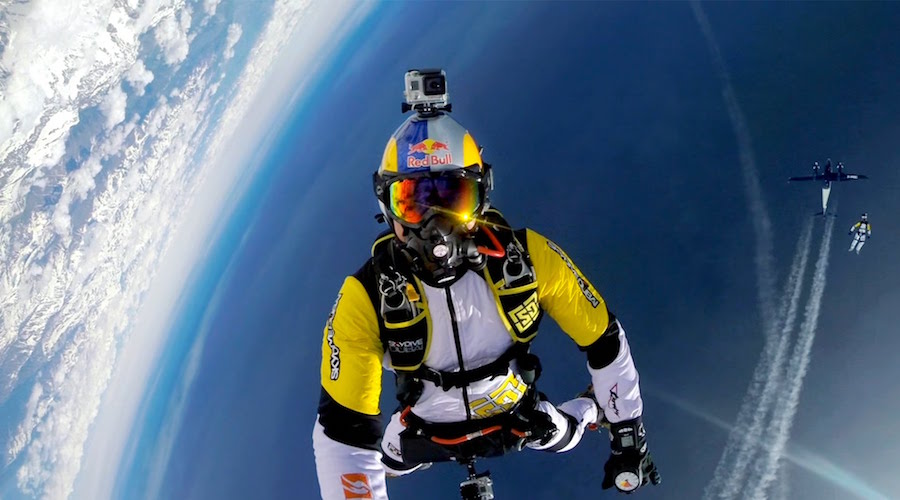GoPro reported fourth-quarter sales that fell short of expectations and provided a weak revenue guidance for the first quarter, but management remained optimistic that it will return to profitability this year.
Revenues during the holiday quarter grew 23.8 percent to $540.6 million but were shy of the $574.5 million that analysts were expecting. First-quarter revenue is also expected to land in the range of $190 million to $210 million, up from $183.5 million a year ago but well below Wall Street’s estimate of $267.6 million.
The action video camera manufacturer reported a loss of $115.7 million, or 82 cents per share, in the quarter compared to a narrower loss of $34 million, or 25 cents, a year earlier. Earnings adjusted for pretax expenses and restructuring costs, however, were 29 cents per share, and surpassed Wall Street’s consensus estimate of 21 cents.
For the year, the company reported a loss of $419 million, or $3.01 per share, against a profit of $140.8 million, or 25 cents a share. Revenues for the year reached $1.19 billion, down 26.8 percent from $1.62 billion in 2015.
The results capped off a tumultuous year that included production issues and delayed holiday delivery for the company’s Hero5 Black premium action camera and the recall of its Karma drone, which went back on sale Wednesday after three months off the market.
On a conference call with analysts, GoPro founder and CEO Nicholas Woodman acknowledged “missteps that led to a shortfall of our revenue guidance” for the quarter, referencing the production issues. Slim inventory of Hero5 Blacks spurred many retailers to cancel marketing support for the camera’s launch, he noted.
“We believe we missed an important opportunity to capture perishable demand during the holiday,” Woodman said.
The drone recall came after consumers complained of it crashing in mid-flight. The company managed to get the drone onto shelves in time for the holiday season last year, but only after several delays. Making and marketing its new drone and cameras is also costly. GoPro’s research and development costs in the quarter rose from $66.4 million a year ago to $92.7 million in its latest quarter. Sales and marketing costs expenses jumped from $82.6 million to $112.7 million.
Regardless, Woodman characterized 2016 as a successful year for GoPro, rolling out the Hero5 line, the Karma Grip hand-held and wearable stabilizer, the Quik mobile and desktop applications and the GoPro Plus cloud service.
“We entered 2017 with the most advanced yet simplest-to-use products and services in GoPro’s history, and created an experience that delivers the best storytelling solution for the GoPro community,” said Woodman. “Big investments in hardware, cloud and mobile have yielded a solid foundational experience for our customers — one that we will continue to build upon in 2017.”
Among the bright spots for GoPro was the fourth quarter generating the second-most revenue in the company’s history and representing its return to non-GAAP profitability for the first time since the third quarter of 2015. The Hero5 Black also became its best-selling digital imaging device in units and dollars.
GoPro also noted that its Instagram following was up 53 percent year over year, fueled by a 245 percent increase in followers from outside the U.S. Likewise, GoPro’s social media views increased 40 percent, netting 238 million views. YouTube alone saw an increase in views of 86 percent over 2015.
On the call, Woodman outlined five key priorities for the year:
- Drive profitability through improved efficiency, lower costs and better execution. Said Woodman, “We’re making GoPro a flatter and more efficient organization with a focus on improved communication and better alignment between teams with a focus on reducing costs wherever possible.”
- Make the smartphone central to the GoPro experience. Said Woodman, “In 2017 there will be new cameras, new accessories and importantly, a dramatic simplification of the storytelling process with the smartphone playing an even more central role.”
- Market the improved GoPro experience to its extended community. Stated Woodman, “We believe the path to the masses is through the greater community of GoPro users, followers and fans. Once engaged and enabled they can become brand ambassadors to a much larger audience around the world.”
- Grow business internationally. Said Woodman, “Action items include language localized product and marketing, better leveraging of our existing regional marketing teams, and focusing our investments on the biggest opportunities in EMEA and APAC.”
- Expand the GoPro experience for advanced users. Added Woodman, “Drones, stabilization and virtual reality products represent significant opportunities for GoPro now and in the future.”
GoPro’s struggles as of late have been well documented. On November 30, the company announced it was laying off 15 percent of its workforce and shutting down its entertainment division. Shares of GoPro have been in a tailspin since reaching a peak of more than $93 per share in October 2014, less than four months after the IPO. They have fallen about 89 percent from their peak.
Photo courtesy GoPro
















